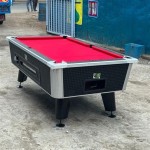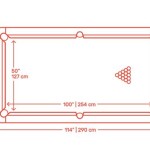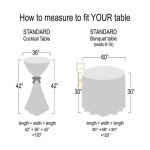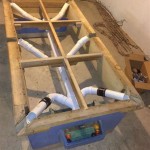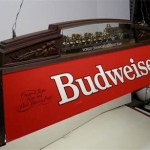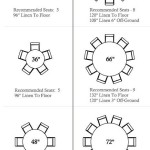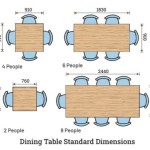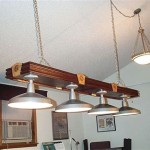What is a Good Pool Table for Home Use?
Selecting a pool table for home use involves considering numerous factors to ensure the chosen table provides a satisfying and lasting recreational experience. Beyond simply wanting a pool table, prospective buyers should evaluate space constraints, budget limitations, construction quality, and desired aesthetic. The information below provides a detailed exploration of the key elements that define a suitable pool table for a home environment.
Key Point 1: Size and Space Requirements
One of the most crucial aspects of selecting a pool table is determining the appropriate size for the available space. Pool tables are typically categorized by their playing surface dimensions, with common sizes including 7-foot, 8-foot, and 9-foot models. A 7-foot table, often referred to as a "bar box," is typically the smallest and most space-efficient option, ideal for smaller rooms. An 8-foot table offers a good balance between playing area and space requirements, making it a popular choice for many homes. A 9-foot table, the standard size used in professional tournaments, requires a substantially larger room and is best suited for dedicated game rooms or larger recreational spaces.
Beyond the table's dimensions, it is essential to account for the "play area" surrounding the table. This refers to the open space required to comfortably maneuver the cue stick without obstruction. A general rule of thumb is to allow at least 5 feet of clearance around all sides of the table. This translates to needing a room that is at least 13 feet by 17 feet for a 7-foot table, 13.5 feet by 17.5 feet for an 8-foot table, and 14 feet by 18 feet for a 9-foot table. These measurements are based on using a standard 58-inch cue. Shorter cues are available, which can reduce the required play area slightly, but it is still advisable to err on the side of caution when assessing space requirements. Prior to purchase, meticulously measure the intended space and compare it against the recommended clearances for the desired table size. Failure to do so can result in a cramped playing environment that diminishes the enjoyment of the game.
Several online tools and apps are available that allow users to virtually place a pool table within a room, providing a visual representation of the space it will occupy. These tools can be helpful in visualizing the table's footprint and ensuring there is ample room for comfortable gameplay. Consider simulating a game scenario by physically walking around the measured space while mimicking cue strokes to further assess the room's suitability. If space is truly limited, convertible pool tables that double as dining tables or other furniture may provide a viable alternative. However, be aware that convertible tables often compromise on playing quality to achieve their dual functionality.
Key Point 2: Construction and Materials
The quality of construction and the materials used in a pool table's creation directly impact its playability, durability, and longevity. A well-constructed table will provide a level playing surface, accurate ball response, and withstand years of use. Key components to evaluate include the slate bed, frame, rails, and cloth.
The slate bed is arguably the most critical element of a pool table. Slate is a dense, naturally occurring stone known for its flatness and stability. The thickness of the slate is a primary indicator of quality; thicker slate provides a more consistent and level playing surface. Professional-grade tables typically use 1-inch thick slate, while some high-end home tables may even feature 1.25-inch thick slate. Lower-quality tables may use ¾-inch or even thinner slate, which can be more susceptible to warping and unevenness over time. Slate beds are usually composed of one, two, or three pieces. Three-piece slate configurations are generally preferred, as they allow for easier leveling and are less prone to shifting. The seams between the slate pieces are filled and sanded to create a seamless playing surface. Inspecting the slate bed for any visible imperfections or inconsistencies is essential before purchasing a table.
The frame provides structural support for the slate bed and other components. Hardwoods, such as maple, oak, and poplar, are generally preferred for the frame due to their strength and stability. Softwoods, like pine, are less durable and may be more prone to warping. The frame should be robust and well-joined to ensure the table remains level and stable over time. Look for evidence of solid construction, such as mortise-and-tenon joints or reinforced corner blocks. The rails, also known as cushions, are attached to the frame and provide the rebounding surface for the balls. High-quality rails are made from solid wood and covered with cushion rubber. The rubber should be responsive and provide consistent ball deflection. Look for name-brand rubber cushions, such as Artemis or Brunswick, which are known for their quality and durability. The cloth, also known as felt, covers the slate bed and rails. Wool-nylon blends are commonly used for pool table cloth, with higher wool content generally indicating better quality. A heavier cloth will typically last longer and provide a smoother playing surface. Factors such as the speed of the cloth and the nap (directional fibers) also influence gameplay.
The pockets of the table also contribute to the overall playing experience. Look for pockets made of durable leather or rubber that can withstand repeated ball impacts. The size and shape of the pockets can also impact gameplay, with tighter pockets increasing the difficulty of the game. Consider the overall aesthetic of the table as well. Pool tables are available in a wide range of styles, from traditional to modern. Choose a table that complements the décor of the room and reflects personal preferences.
Key Point 3: Budget and Brands
The budget allocated for a pool table purchase will significantly influence the available options. Pool tables range in price from a few hundred dollars to several thousand, depending on their size, construction quality, and features. It is essential to establish a realistic budget before beginning the search. Entry-level pool tables, typically priced under $1,000, often feature thinner slate, less durable frames, and lower-quality cloth. These tables may be suitable for casual players or those with limited budgets, but they may not provide the best playing experience or long-term durability. Mid-range pool tables, priced between $1,000 and $3,000, typically offer better construction quality, thicker slate, and more durable components. These tables are a good choice for serious recreational players who want a table that will provide years of enjoyment. High-end pool tables, priced above $3,000, feature the highest quality materials, meticulous craftsmanship, and advanced features. These tables are designed for discerning players who demand the best possible playing experience and are willing to invest in a premium product.
Numerous brands manufacture pool tables, each with its own reputation for quality and value. Some of the well-known and respected brands include Brunswick, Olhausen, Diamond, and Connelly. Brunswick is one of the oldest and most established pool table manufacturers, known for its high-quality tables and innovative features. Olhausen is another reputable brand that produces a wide range of pool tables, from entry-level to high-end models. Diamond Billiards specializes in professional-grade pool tables used in tournaments and competitions. Connelly Billiards offers a range of stylish and well-constructed pool tables that are popular with home users. Researching different brands and reading customer reviews can provide valuable insights into the quality and reliability of their products.
Consider purchasing a used pool table to save money. Used pool tables can often be found at significant discounts compared to new tables, but it is essential to carefully inspect the table before buying it. Check the slate for cracks or warping, examine the frame for damage or instability, and assess the condition of the cloth and rails. If possible, play a few games on the table to evaluate its playability. Hiring a professional pool table mechanic to inspect the table can provide an objective assessment of its condition and value. Investing in quality accessories, such as cues, billiard balls, racks, and a brush, will enhance the playing experience. A good set of cues will provide better control and accuracy, while high-quality billiard balls will roll truer and last longer.

Professional Pool Table Home Luxury Tables Dining Experts

How Can A Professional Pool Table Improve Your Home

10 Best Pool Tables For Game Rooms And Basements 2024

The Ultimate Pool Table Buyers Guide Canadian Home Leisure

Costway 76 5 In Billiard Table Foldable Pool Perfect For Kids And S Blue Np10255wl Bl The Home Depot

Pinpoint Full Size 7ft Pool Table Net World Sports

Pool 101 What You Need To Know About Rules Supplies More

Professional Pool Table Home Luxury Tables Dining Experts

Valley Panther Home Use Pool Table 6 5ft 7ft 8ft Thailand Tables

Valley Panther Black Cat 88 Pool Table Home Use Game Room

